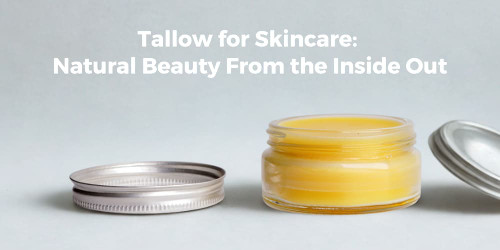In the world of skincare, countless products promise to work wonders for your complexion, but there's one factor that often goes unnoticed: pH. The pH level of your skincare products plays a vital role in maintaining the health and balance of your skin. In this article, we'll delve into Why the pH of your skincare is important, how to read pH levels and how to order your skincare routine to get the most out of your products.
Understanding pH in Skin: What is Skin pH?
pH stands for "potential hydrogen" and is a measure of how acidic or alkaline a substance is on a scale of 0 to 14.
A pH of 7 is considered neutral, while values below 7 are acidic and values above 7 are alkaline. The skin's natural pH hovers around 4.5 to 5.5, which is slightly acidic. This acidity helps maintain the skin's protective barrier, known as the acid mantle, which shields against harmful bacteria, pollutants, and moisture loss.

Why Is a Balanced Skin pH Important?
When your skincare products have a pH that aligns with your skin's natural pH, they are more likely to be effective.
Using products with the wrong pH can disrupt the acid mantle, leading to a compromised skin barrier. This can result in issues such as dryness, redness, sensitivity, and even acne breakouts. Thus, it's crucial to select products that respect your skin's natural pH to maintain its health and radiance.
How Does pH Level Affect My Skin?
Sebum is the oily substance that the skin produces and secretes. Sebum hydrates, moisturizes, and protects the skin from damage.
When the skin’s pH is too alkaline, above 7 pH, it’s not producing enough sebum. This is when we experience sensitive, dry skin and possibly also breakouts. Skin that isn’t sufficiently moisturized with sebum isn’t as resilient, making it especially vulnerable to fine lines, wrinkles, and sagging.
When the skin’s pH is more acidic, below 7 pH, it produces more sebum than necessary. This is what causes oily skin. Acidic skin is ideal for fighting off free radicals and slowing the aging process, but when the skin is too acidic, it becomes oily, greasy, increasingly sensitive, and easily irritated.
Maintaining an optimal skin pH level allows the skin to enforce a much-needed skin barrier (the acid mantle) by producing just enough sebum.
What Can Affect the pH Balance of My Skin?
Your skin’s pH can be raised or lowered due to several different factors and knowing how to identify each is the first step in correcting the imbalance. The following factors can negatively affect your skin’s pH balance:
- Skin-care products, especially those with harsh active ingredients like retinol or acids
- Environmental factors like sun exposure, seasonal changes, and pollution
- Washing your face too frequently or excessive scrubbing
- Using the wrong water temperature to wash your face
- Using soaps with surfactants rather than mild cleansers
- Using an abrasive washcloth or manual exfoliator
- Certain cosmetics
- Your diet, especially foods with a high glycemic index like white bread, white rice, and sweet potatoes
How Can I Tell If My Skin’s pH Balance is Off?
If your skin is too red, too dry, too itchy, too oily, basically too anything, your pH is out of balance.
How Can I Determine pH Levels of My Skin?
- pH-testing strips. They are a great way to test your skin's pH balance. These pieces of paper change color depending on the environment. They're easy to use, relatively cheap, and mostly accurate.
- Dermatologist. They may also offer pH testing in their office. In addition, they can help you with cosmetics and other skin-related care that best suit your needs.
- Mirror Check. The condition of your skin has everything to do with where it’s at on the pH scale. If your skin has a naturally soft texture with no noticeable dry patches or oily areas, your skin, it’s most likely balanced. If your skin is rough and dry, and no amount of moisturizer seems to re-hydrate, you probably have an alkaline, high pH level. If you’re battling oily skin, you probably have an acidic, low pH level.
How Can I Determine pH Levels of a Product?
Determining the pH of your skincare products can be a bit tricky, as most labels do not explicitly state the pH value. Usually, this is the pH of skincare products:
- Cleansers: pH 4.5–7
- Toners: pH 5–7
- Sunscreens: pH 5–7.5
- AHA and BHA Exfoliants: pH 3.2–3.9
- Moisturisers: pH 5–7
- Serums: pH 4–6
- Vitamin C (Ascorbic Acid) products: pH 2.6–3.2
- Retinol products: pH 3.7–5
To gain more accurate information about pH levels, consider investing in pH testing strips or meters specifically designed for skincare purposes. These tools allow you to measure the pH of your products and adjust your routine accordingly.
How Can I Restore My Skin’s Natural pH Levels?
Getting perfect skin might seem like something that’s out of your control, but there are many things you can do to restore the pH of your skin naturally.
- Determine your skin pH level. This measurement will help you understand your skin type and the products or lifestyle changes needed to balance your skin’s pH level.
- Eliminate soaps and harsh cleanser. Start by switching to a mild or low pH cleansers, toners and moisturisers. Ensure they fall within a tight, skin-matching pH range.
- Probiotics. Probiotics can help restore the barrier and balance of skin and bacteria both externally and internally. Add probiotic-rich skincare into your routine.
- Give your skin a break. Refrain from using acids, scrubs, vitamin C serums and other extremely high or low pH products.
- Moisturise daily. Replenishing your skin’s moisture, dehydrated skin causes damage to the acid mantle, which increases your alkalinity.
- Always use an SPF. Using sunscreen regularly protect the skin from harmful UV rays that can potentially disrupt your skin's pH and shielding it from further damage.
- Adhere to a good diet. Choose organic foods whenever possible and incorporate more whole foods into your diet like vegetables, berries, avocado, olive oil, nuts, seeds, beans, chicken, and fish. Try to limit your intake of sugar, dairy, gluten, fried and processed foods.
How Do I Structure My Skincare Routine According to pH to Avoid Skin Damage?
As we mentioned earlier, some penetrate better at a low pH. But with low pH skincare also more likely to cause skin reactions and irritations, the key to good skin is striking a balance between using a product to its max potential and keeping sensitive skin happy.
On the days you’re using low pH, acidic treatments, avoid using a high pH cleanser or toner. Get low all the way, baby! This will increase the efficacy of the treatment and permit you to use it less frequently to get the same results (better for your skin barrier AND your wallet). Below is our handy guide on what pH level is best for maximum absorption for the below ingredients, and how to integrate them into your routine:
















